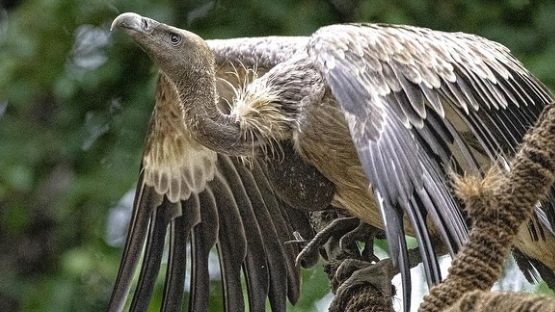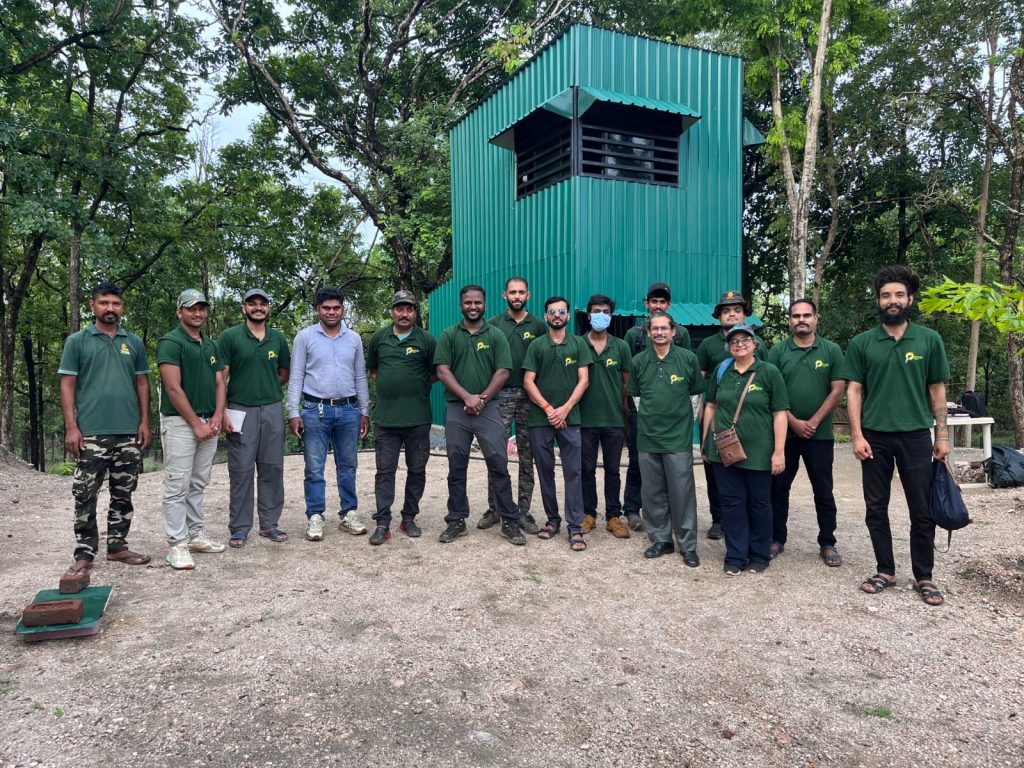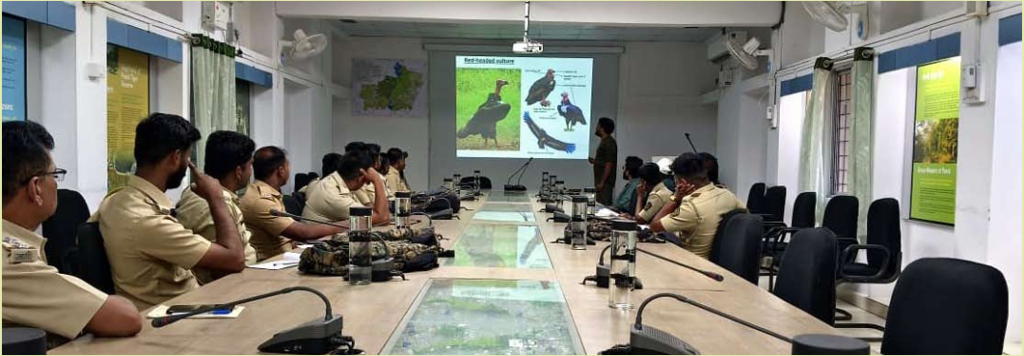Bombay Natural History Society’s (BNHS) Vulture Conservation Programme
To combat the plummeting vulture numbers across the country, our partner BNHS has been managing Vulture Conservation Breeding Centres (VCBC) across the country in partnership with local governments, where more than 750 birds have been bred successfully in captivity since 2004. Early this year, 20 critically endangered vultures were released by BNHS in central Indian Tiger Reserves as a part of this collaborative initiative to save the vultures from looming extinction. These vultures were initially housed in pre-release aviaries.

Picture credit- BNHS team
The recent release in the Pench Tiger Reserve (Maharashtra)
In August, 10 Long billed vultures living in the pre-release aviary at the Pench Tiger Reserve (Maharashtra) were successfully released into the wild, signaling the success of the reintroduction process. Each of the released vultures was fitted with GPS tags, enabling monitoring of their movements in the wild.

The BNHS team involved in this initiative
Awareness and capacity building workshops
To ensure there are sustained benefits of the project, BNHS teams are also conducting community engagement and awareness programmes for cattle owners, other community members and students around the vulture nesting colonies to sensitize them about the importance and conservation of these vultures. They have also partners with another SLTP partner, Satpda Foundation for delivering these programmes.
Furthermore earlier this year, BNHS in collaboration with the Pench Tiger Reserve Maharashtra, conducted four workshops on vulture identification for the frontline staff of all the ranges of the tiger reserve. The activity was carried out prior to the vulture surveys initiated by the Reserve’s management in May 2024, with technical support from BNHS. During the capacity-building activity, participating staff were sensitized about the importance of vultures and the need for their conservation. They were then trained on identification of the different vulture species recorded in Maharashtra, along with tips on identifying nesting sites.

Capacity building workshops for the Forest Department
